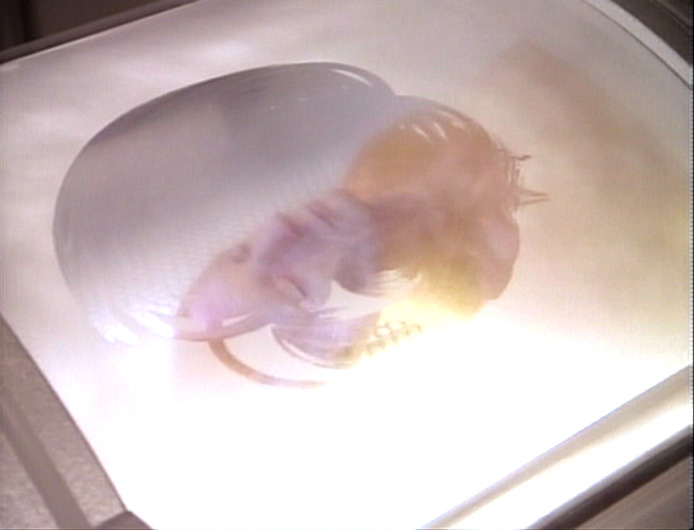Difference between revisions of "Clones"
Darth Servo (talk | contribs) |
|||
| Line 1: | Line 1: | ||
A clone is either a complete genetic copy of a living organism or a subset of its genes. In biological research and | A clone is either a complete genetic copy of a living organism or a subset of its genes. In biological research and engineering, the term 'cloning' simply means making copies of a particular gene or genes. | ||
== Clones in | == Clones in Science Fiction == | ||
Like many scientific concepts, cloning has been thoroughly misunderstood by people who write science fiction. Shows like [[Star Trek]] portray the cloning process as creating a complete mature adult from scratch, as seen in the accompanying picture from the [[TNG]] episode "Up The Long Ladder". | |||
Like many scientific concepts, cloning has been thoroughly misunderstood by people who write science fiction. Shows like Star Trek portray the cloning process as | |||
[[Image:Trek clone.jpg]] | [[Image:Trek clone.jpg]] | ||
Clones also often possess skills at the time of their "birth" that take years for a 'normal' human(oid) to learn, as is the case with the [[Jem'Hadar]], which are grown and combat ready in a matter of days. In the film ''Multiplicity'', the clones even had the complete memories of the original person who donated his genetic material: the clone at first believed himself to be the original person. To say this is not how cloning works is an enormous understatement. | |||
For all their other fanciful or unrealistic aspects, films like | For all their other fanciful or unrealistic aspects, films like [[Star Wars]] and ''Jurassic Park'' show a far more accurate portrayal of cloning. Cloning a whole organism is very similar to having identical twins. The clone needs to go through the same growth and learning processes as a regular organism. In ''[[Star Wars: Attack of the Clones]]'', we witnessed the clones in various phases of development: embryonic, childhood, and adult. In ''Jurassic Park'', we saw the cloned dinosaurs hatching from eggs. | ||
[[Category:Science]] | [[Category:Science]] | ||
Revision as of 15:03, 25 January 2008
A clone is either a complete genetic copy of a living organism or a subset of its genes. In biological research and engineering, the term 'cloning' simply means making copies of a particular gene or genes.
Clones in Science Fiction
Like many scientific concepts, cloning has been thoroughly misunderstood by people who write science fiction. Shows like Star Trek portray the cloning process as creating a complete mature adult from scratch, as seen in the accompanying picture from the TNG episode "Up The Long Ladder".

Clones also often possess skills at the time of their "birth" that take years for a 'normal' human(oid) to learn, as is the case with the Jem'Hadar, which are grown and combat ready in a matter of days. In the film Multiplicity, the clones even had the complete memories of the original person who donated his genetic material: the clone at first believed himself to be the original person. To say this is not how cloning works is an enormous understatement.
For all their other fanciful or unrealistic aspects, films like Star Wars and Jurassic Park show a far more accurate portrayal of cloning. Cloning a whole organism is very similar to having identical twins. The clone needs to go through the same growth and learning processes as a regular organism. In Star Wars: Attack of the Clones, we witnessed the clones in various phases of development: embryonic, childhood, and adult. In Jurassic Park, we saw the cloned dinosaurs hatching from eggs.